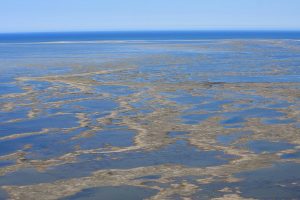In 1868, the bone was transferred to the care of the Provincial Museum of Nova Scotia (now the Nova Scotia Museum), where it has remained for more than 150 years. Recent analysis of pollen found deep in a crack in the femur suggests it’s around 80,000 years old. That means this mastodon was alive during the last interglacial period of the Pleistocene epoch, happily stomping through a mixed forest, taiga and tundra landscape similar to present-day Labrador.
“We think of them as ice age animals, but the mastodon actually lived in a temperature and an environment surrounded by animals that we would all recognize today, except for the sabre-toothed cats and the giant beavers,” says Tim Fedak, curator of geology at the Nova Scotia Museum.
The femur isn’t the only evidence of mastodons found in Nova Scotia — half a dozen specimens have been reported since, including teeth, bone fragments, tusks and, most significantly, the near-complete skeleton of an adult and the partial skeleton of a juvenile hauled out of a sinkhole at the Milford gypsum quarry in 1991. While scientists know these animals roamed throughout the continent, Nova Scotia’s unique karst topography makes it one of the richest deposits of mastodon fossils. Sinkholes and deep underground channels, which have been forming for hundreds of millions of years, are filled with old sediment — time capsules from ancient epochs.









